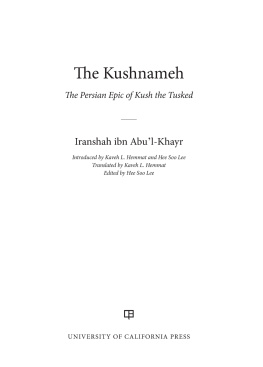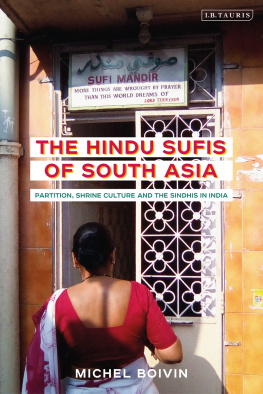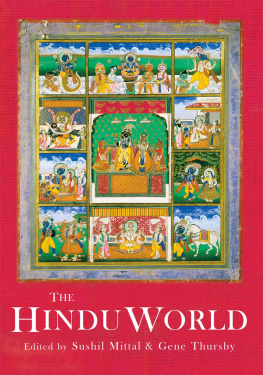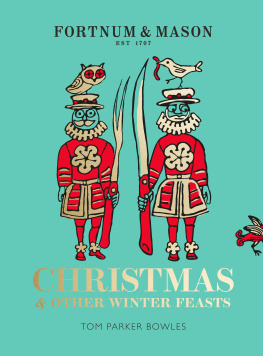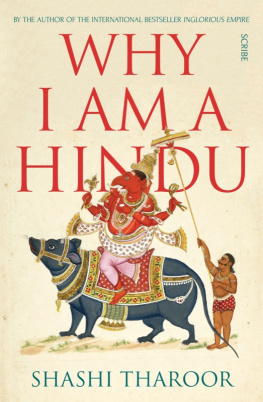Pagan Christmas
Winter Feasts of the Kalasha of the Hindu Kush
Augusto S. Cacopardo
First published in Italian by Sellerio editore as Natale Pagano
Copyright 2010 Sellerio editore, Palermo
Revised and updated by the author for its publication in the United Kingdom, published by
Gingko Library
70 Cadogan Place
London SW1X 9AH
Copyright Augusto S. Cacopardo 2016
Translation copyright Augusto S. Cacopardo 2016
The rights of Augusto S. Cacopardo to be identified as the author of this work has been asserted in accordance with the Copyright, Designs and Patent Act 1988.
All rights reserved. Except for brief quotations in a review, no part of this book may be reproduced in any form or by any electronic or mechanical means, including information storage and retrieval systems, without written permission from the publisher.
A CIP catalogue record for this book is available from the British Library.
ISBN 978 1 909942 84 4
eISBN 978 1 909942 85 1
Typeset in Times by MacGuru Ltd
Printed in Spain
www.gingkolibrary.com
@gingkolibrary
To little Martin who was born just as this book saw the light
To Amina, his mother
To the memory of my mother, Gianna
Contents
The Kalasha and the objectives of the present research XX; The background: early research on Chaumos XX; The valley of Birir and the present research XX; Theoretical approaches, XX; Problems of interpretation XX; Ritual as a language XX
Peristan XX; The Islamization of Chitral and the establishment of the Muslim kingdom XX; The Kingdom of Chitral XX; An encapsulated society: the Kalasha political organization XX; A brief note on Chitral and the Afghan conflict XX.
Kalasha tradition XX; The system of production XX; The Kalasha symbolic system and its social projections XX; Kalasha polytheism XX
Polytheists and Muslims in Birir XX; Kinship and society in Birir XX; The annual ritual cycle in Birir XX
Arrival in Birir: everyday life in the valley XX; My assistants and the winter ritual logjam XX; Acharik and gandalikan 10 December XX; Desh sucein and bhut ungushek 14 December 2006 XX; Ruzhias 15 December 2006 XX; Goshtsaraz 16 December 2006 XX; Kalasha song and dance XX; Nongrat 17 December 2006 XX; Istongas rat 18 December 2006 XX; Kot shatek 19 December 2006 XX; Aspar nat 20 December 2006 XX; Dau pachein 21 December 2006 XX
Lagaur 57 January 2007 XX; Jhan 2325 January 2007 XX; Salgherek and Benjistem 31 January/1 February 2007 XX; Raistam XX
The Chaumos of Birir and Bumburet/Rumbur: structures in comparison XX; The descent of Balimain into the Bumburet valley XX; Structure and history in the Kalasha Chaumos XX; The coincidence of opposites in Indian philosophy and in the Kalasha system XX; Kalasha cosmology XX
The pre-Islamic cultures of Nuristan and the Indian world XX; The Kalasha religious system and the Vedic religion XX; The fundamental opposition in the Kalasha symbolic system and in Hinduism XX; Chaumos and Indian religious festivals XX; The Hindus of the Himalayas XX
Affinities XX; Winter feasts in European folklore XX; Carnival and Christmas XX; The personifications of Christmas and Carnival XX; The Visitor god and the Dying god XX; The deep meaning of the two figures XX; Balimain and Dionysus XX; The Silk Route and the Wine Route XX
The reconstruction of Proto-Indo-European culture XX; Peristan and the Proto-Indo-Europeans XX; Peristan and the tripartite ideology of George Dumzil XX; The religion of the Proto-Indo-Europeans XX; Conclusions XX
List of Maps
Map I Peristan and surrounding countries.
Map II The Chitral valley (south-western section) and the Nuristani valley of Bashgal. The thicker line in the middle indicates the border between Afghanistan and Pakistan.
Map III The three Kalasha valleys and the upper part of the Bashgal valley, separated by the state border.
Map IV The valley of Birir.
Maps I, II and III are portions of larger maps prepared by Alberto M. Cacopardo and drawn by Giovanni Mattioli in 2001. The physical features on the maps are based on the US Air Force Tactical Pilotage charts, 1:500.000 (St. Louis 1981), but several other sources have been used (see Cacopardo & Cacopardo 2001: 317). Map IV was prepared by Augusto S. Cacopardo and drawn by Giovanni Mattioli. It is based, for the physical part, on aerial photos available at the site http://www.bing.com/maps/; toponyms are mostly derived from direct observation.
I
II
III
IV
Acknowledgements
Many people have contributed in different ways to the research on which this work is based, both in Pakistan and in Italy.
In Pakistan I must thank first of all my hosts and my friends in Birir. Without their cooperation this work would not have been possible. I am especially grate- ful to my host Erfan and to his wife, to Baras Khan, my main assistant, to Danok and Gulistan who cooperated with me with dedication for the whole time of my research, to Ala-ud-din and Gulfurus, who helped me in various ways, and to kazi Saidan Shah, a true expert in Kalasha tradition. My thought goes also to old Sherbek, he too a guardian of tradition, always available for long conversations, who is no longer with us. I must thank also the women of Guru Village who, in the most sacred night of the Lagaur festival, implored on my behalf the White Crow to give me soon a son (a prayer that was fulfilled). Apart from my hosts and friends in Birir, several other people offered me assistance in the Kalasha valleys. I want to remember the late Shah Juwan, my first host and assistant in Rumbur, and Lader Khan, my fraternal friend, who led me into the world of the high summer pastures. The complete list would be too long. I heartily thank everybody.
In Italy I owe gratitude to Antonino Buttitta, anthropologist at the University of Palermo, who gave both friendly encouragement and vital support to my research, as well as to Lucio Melazzo, linguist in that same university, who was also very helpful. I must recall the late Gherardo Gnoli, former President of the Istituto Italiano per lAfrica e lOriente (IsIAO) which partially funded my project, cov- ering my travel expenses with money made available by the Italian Ministry of Foreign Affairs. For precious assistance in the reading of works in German I am grateful to my old friend Mario Gulli and to Alberto M. Cacopardo, my brother, himself a scholar of the Hindu Kush, who also commented on a former version of this work (the responsibility for any shortcomings is, of course, my own) and prepared most of the maps. I want to recall also the support of Silvia Lelli, friend and colleague, who assisted me in one of my field trips. I am grateful to Pierpaolo Di Carlo, the linguist in our research team, for his generous assistance with ques- tions concerning linguistics and Indo-European studies. The cooperation of my colleague ethnographer and friend Martino Nicoletti was also important; while in Pakistan on a project of his own, he joined me in Birir to film the events of the four central days of the winter solstice festival. For the realization of this English edition I owe a lot to the support of my dear old student Edoardo Braschi. A final expression of gratitude goes to my wife, Amina De Napoli, who personally took care of various tasks concerning my research including the ordering of the bib- liographic references and supported me enormously in all possible ways.


